This device, sometimes called a “5 port valve,” can be powered by air or electricity, with air pressure being the most common source of power. Four-way solenoid valves have five ports to allow air pressure to move an actuator or rod back and forth inside the valve, in order to control the direction of flow. Read More…
Solenoid Solutions manufacturers custom direct-acting 2 and 3-way solenoid valves and multi-valve manifolds for OEMs in the medical, appliance, transportation, power generation and industrial equipment markets.
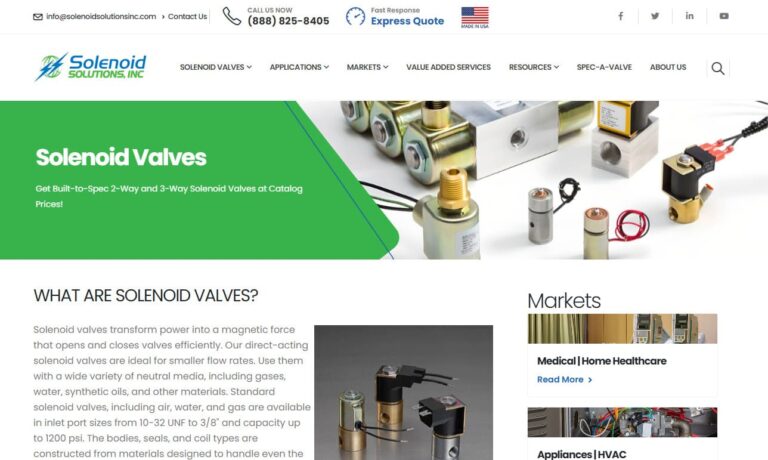
Our solenoid valves are all tested in house following very strict quality guidelines. We opened our doors in 1936 and ever since then we have been committed to bringing top of the line products and customer service that cannot be beat!

At Electric Solenoid Valves, we specialize in providing comprehensive solutions for solenoid valves, tailored to meet the diverse needs of our valued clientele. With expertise in fluid control systems, we have established ourselves as a trusted leader, known for our unwavering commitment to quality, innovation, and customer satisfaction. Our product offerings encompass a wide range of solenoid...
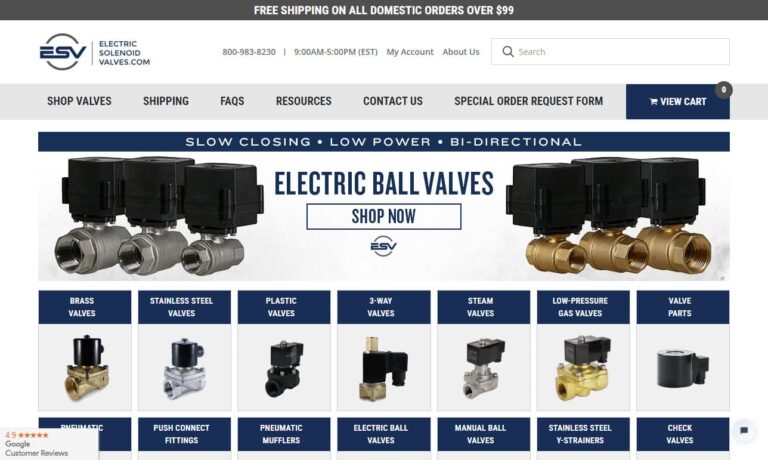
Deltrol Controls manufactures and designs a full line of stock and custom solenoids, electrical relays, dispensing valves, and custom switch assemblies. Customer satisfaction is our number one priority so we employ talented workers and stay up-to-date with the latest technology. Whatever your specific need is, Deltrol Controls has the solution. To receive a quote or more information please...
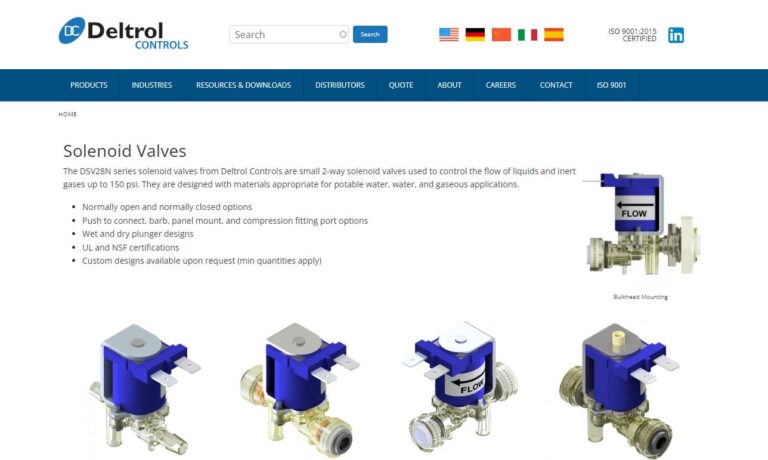
Versa® Products offers a wide range of pneumatic control valves, air valves and solenoid design. We have maintained our commitment to quality products and services since our company was established in 1949. We are a solenoid valve manufacturer, offering solenoids in brass and stainless steel.
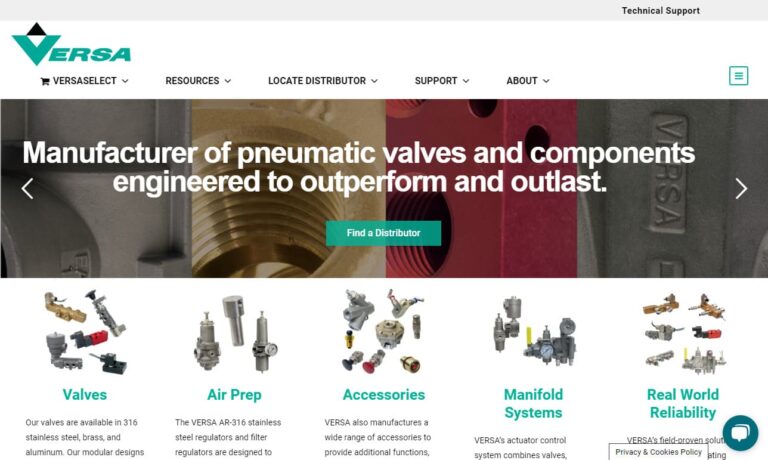
More 4 Way Solenoid Valve Manufacturers
There are a few different common configurations of 4 way solenoid valves.
One design contains one liquid inlet and two outlets. In this case, the direction of flow is controlled by the position of the internal actuator. The other two ports, one on each end, aid in air pressure connections. As air pressure enters one end, the rod moves and internal channels allow the fluid to flow in one direction. If air pressure enters at the other end, the rod moves in the opposite direction, revealing a different flow channel that allows fluid to go in the other direction.
These 4 way solenoid valves are useful because they permit one device to control flow in multiple directions. Since one valve can be used for more than one control task, they are an advantageous purchase for a consumer whose control system only has a few connections available.
Another type of 4 way solenoid valve is a stepper valve, which employs a ratchet system to advance the valve each time it is energized. Gears inside the valve move the actuator each time an electrical signal or burst of pressurized air is sent. Stepper valves can be used to turn flow on and off in a predetermined sequence or to activate different systems connected to the valve.
The stepper variety of 4 way solenoid valves are best suited to tasks that occur in order, or sequential positioning, without the need to go back to its original position or jump to a new one. This is because each signal on the stepper valve turns it to a new position, without the ability to return to a previous position until the signal is lost or the operation is complete. Uses well-suited to the stepper valve are, among others, lawn sprinkling, water softener regeneration, and pool chemical treatment.
Since the development of greater computer technology, some solenoid valves have become equipped with "intelligence," able to use sensor readings. For example, as signals are sent from various points in a chemical process, a solenoid can make decisions on how to operate. Valves with this type of programming are able to make operating choices without being connected to a central control circuit.

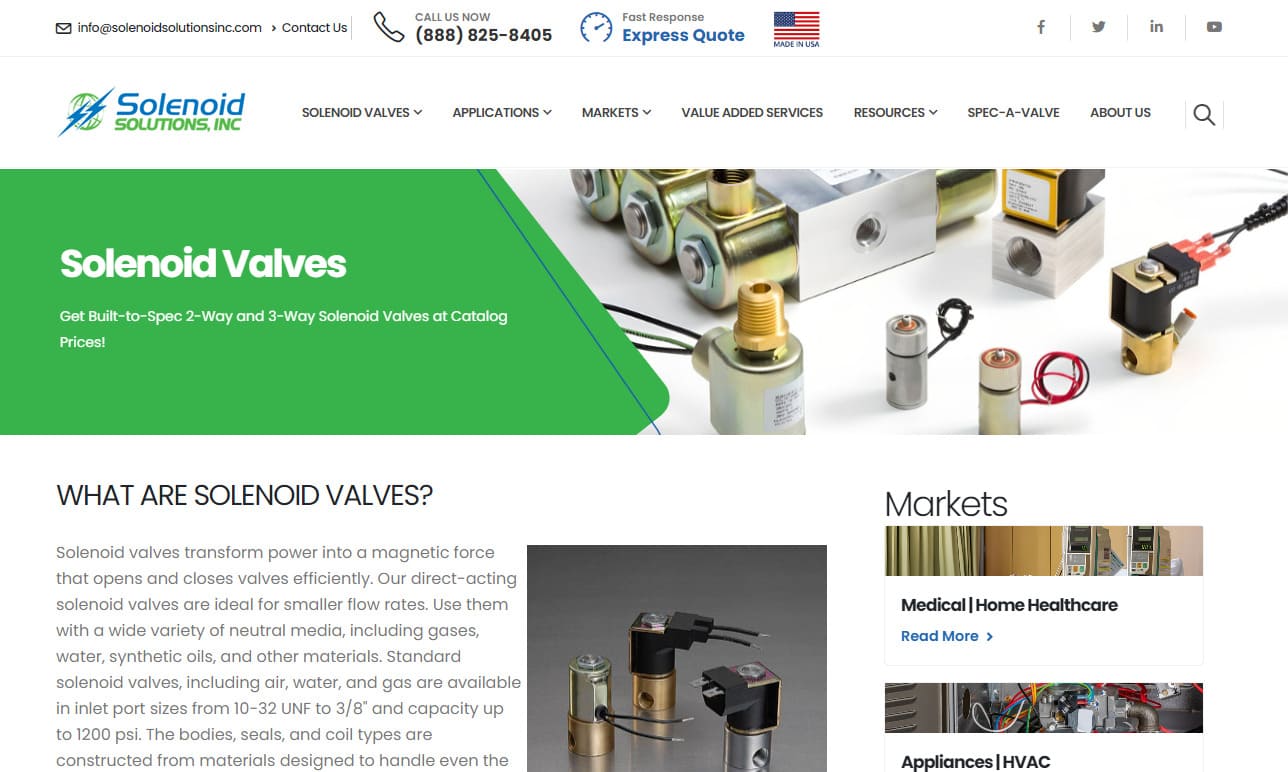
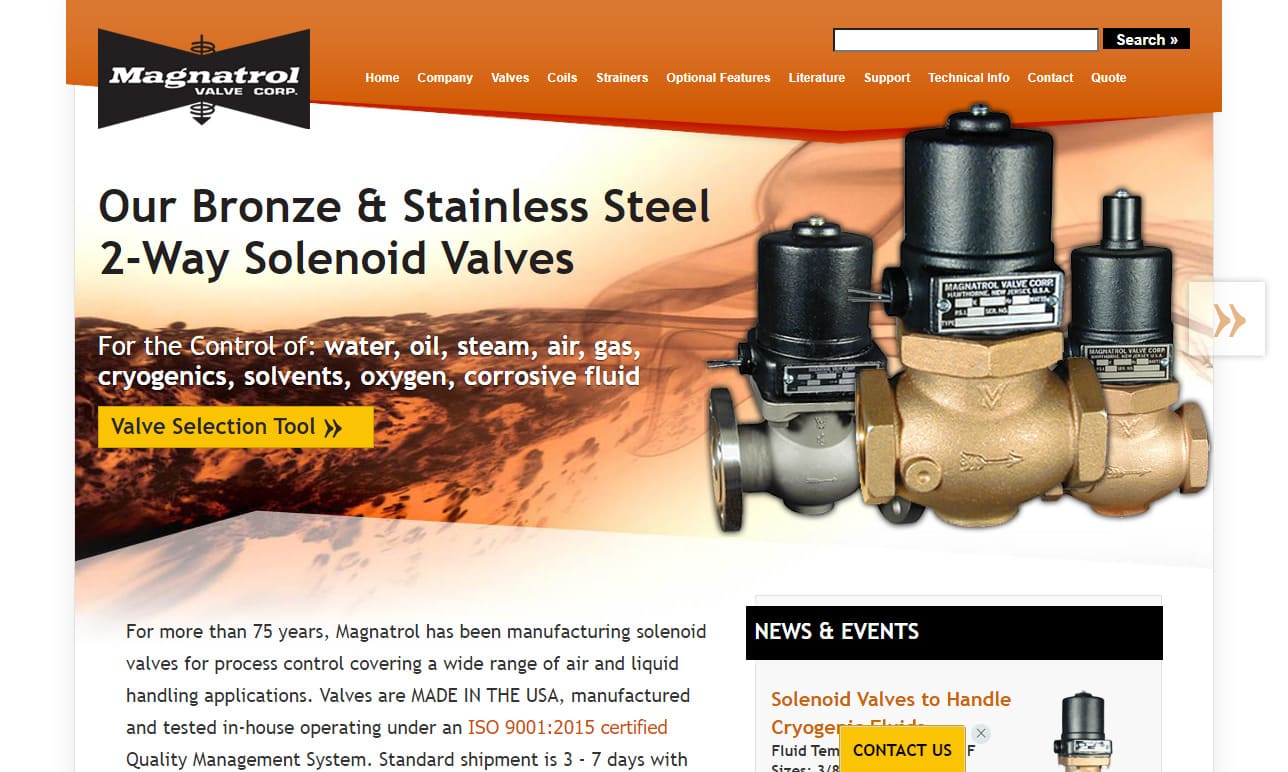



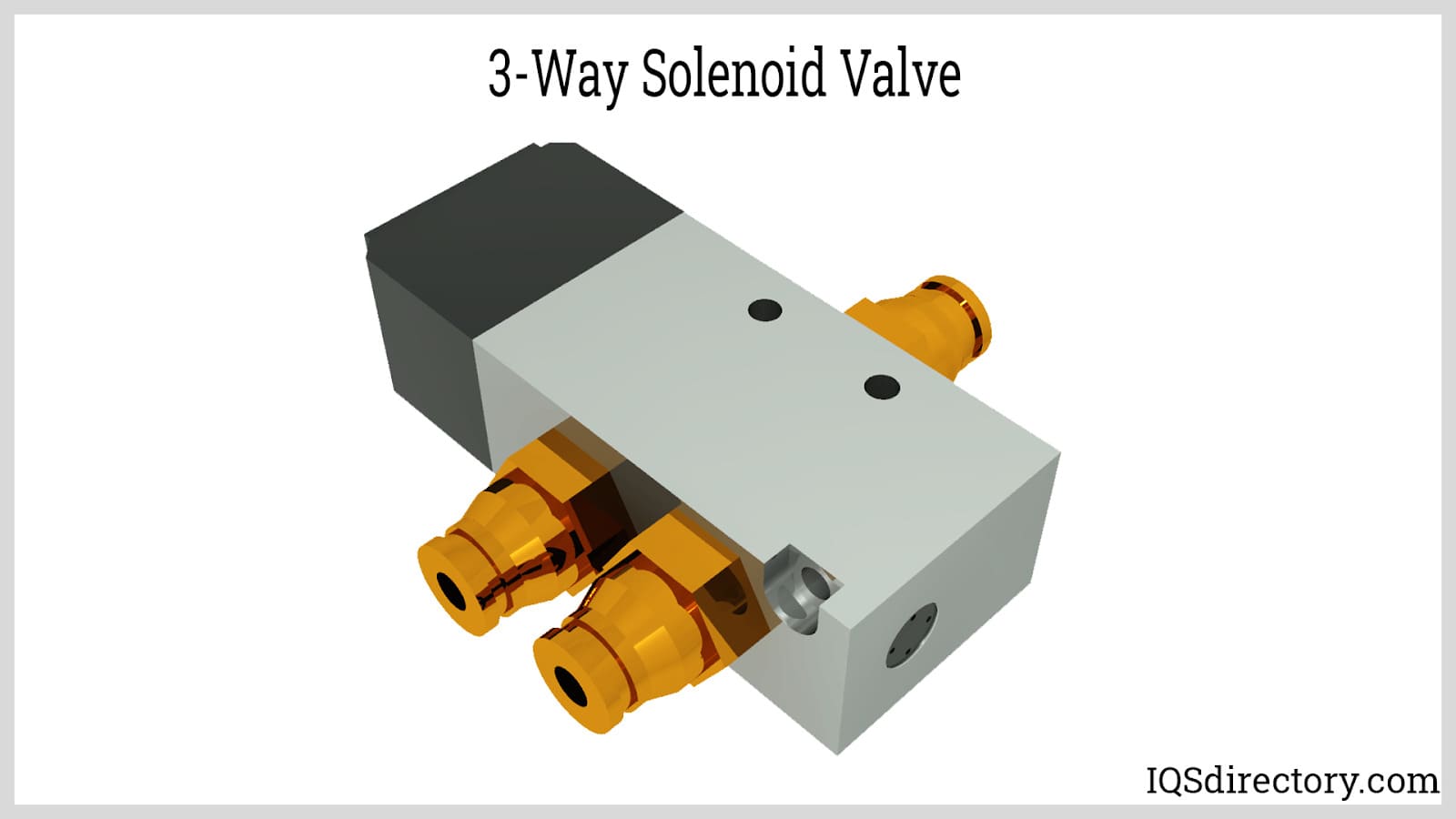
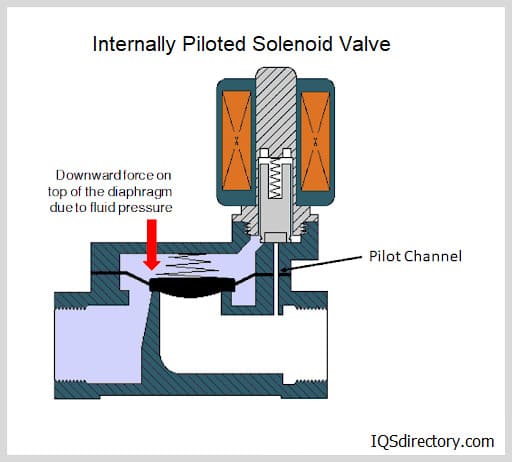
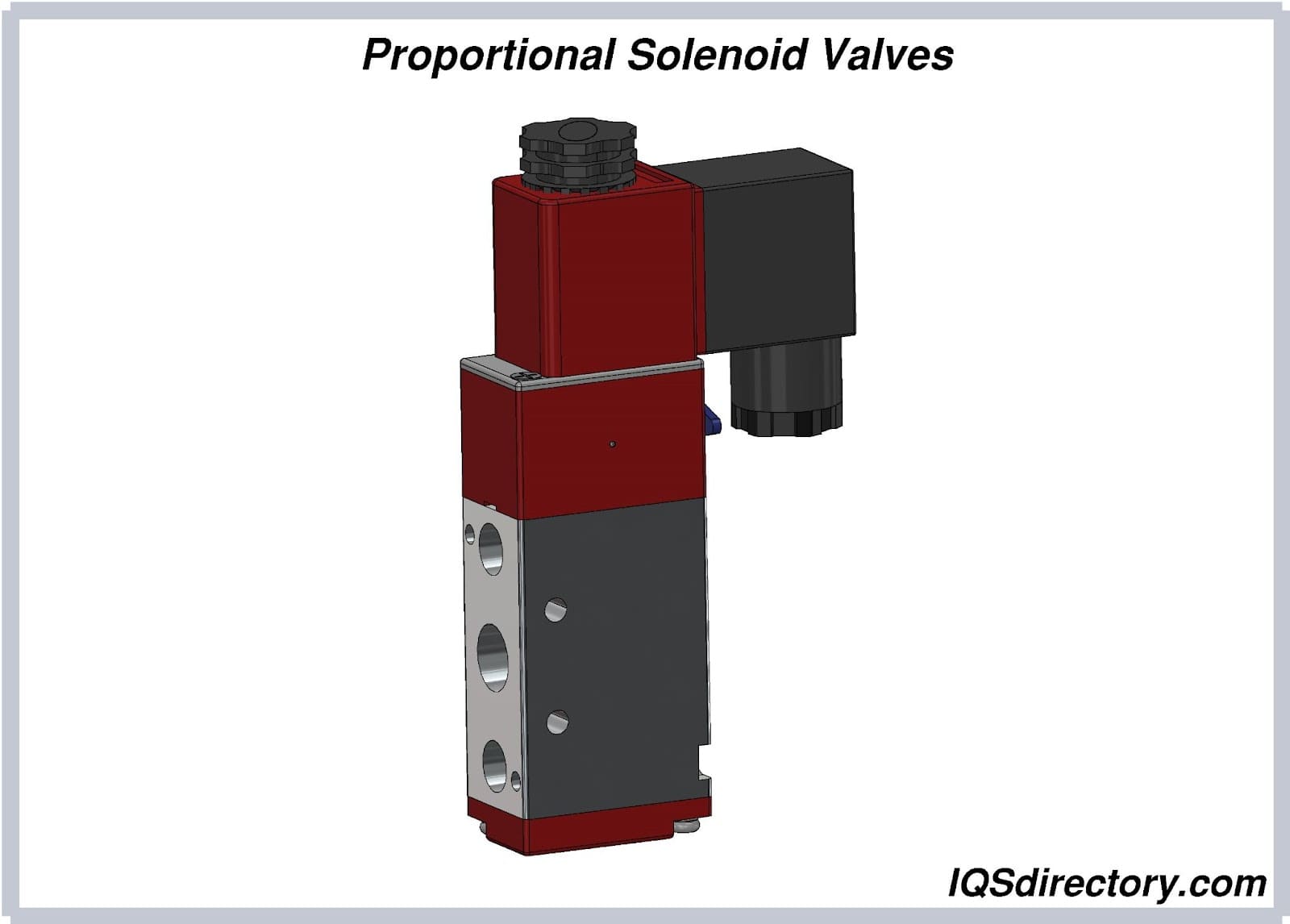
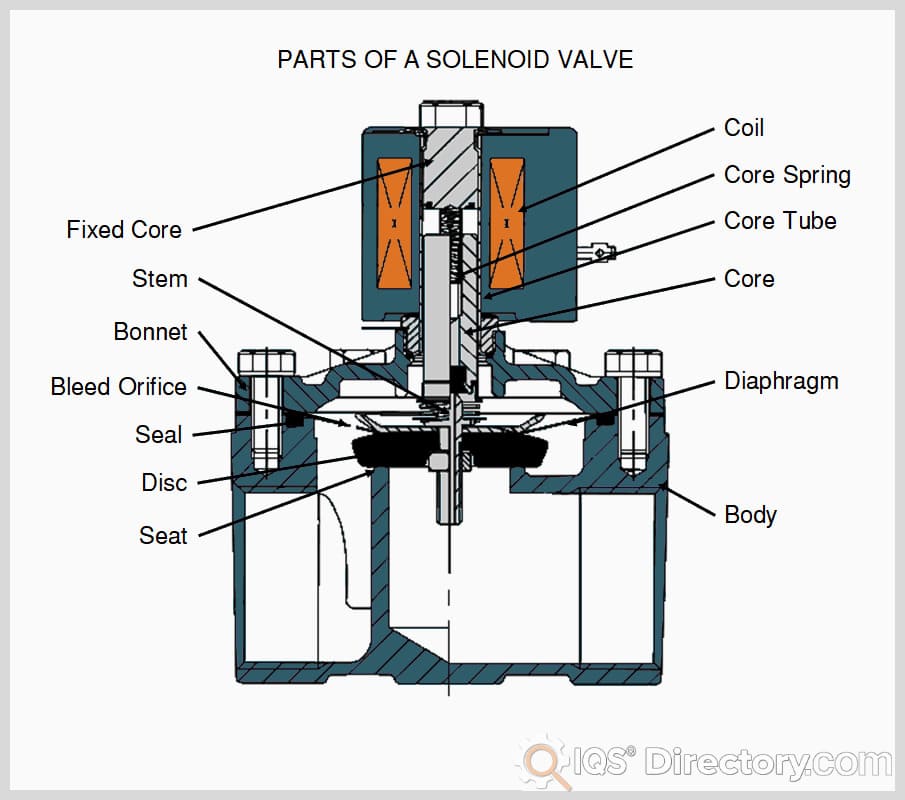
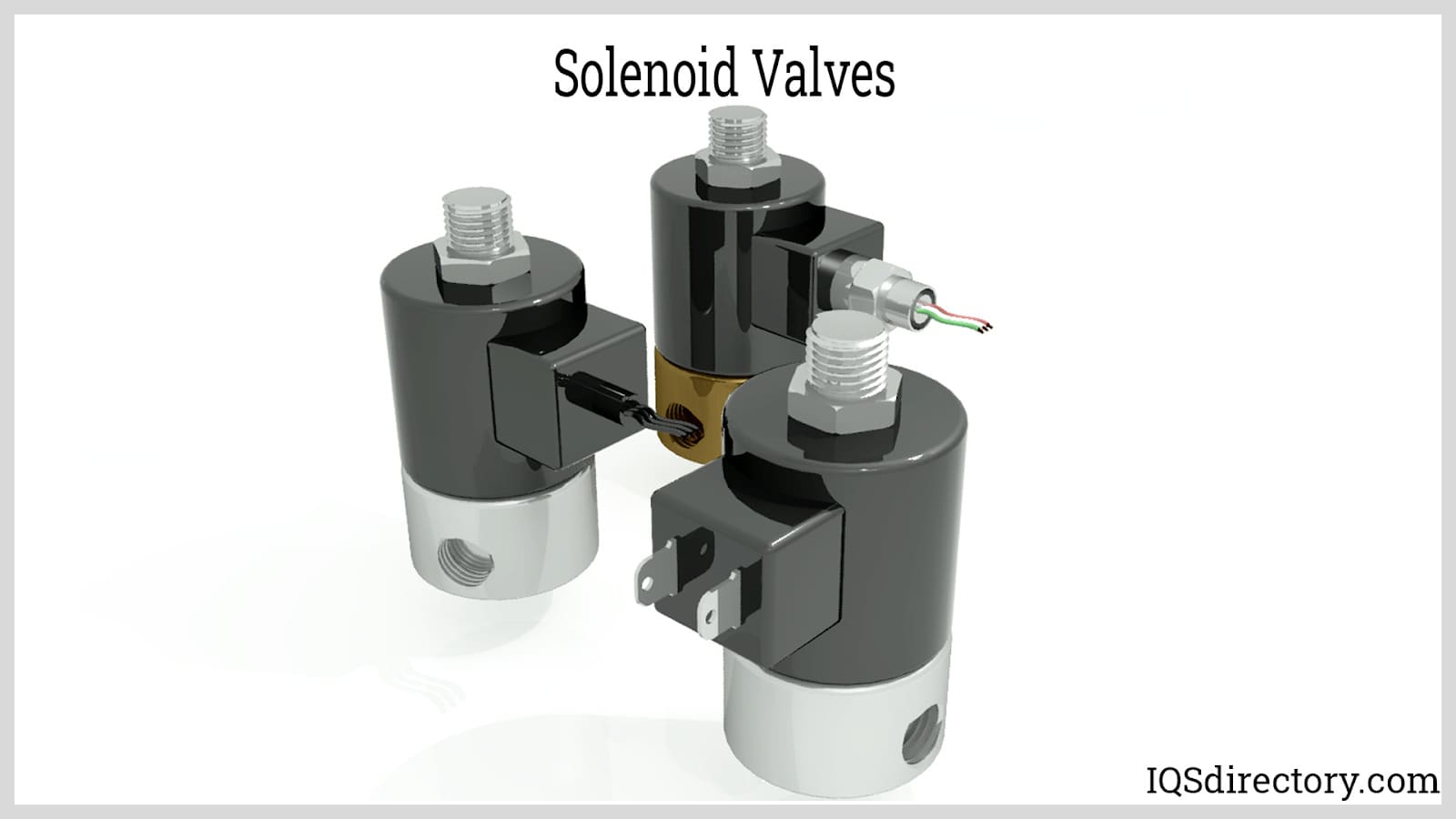
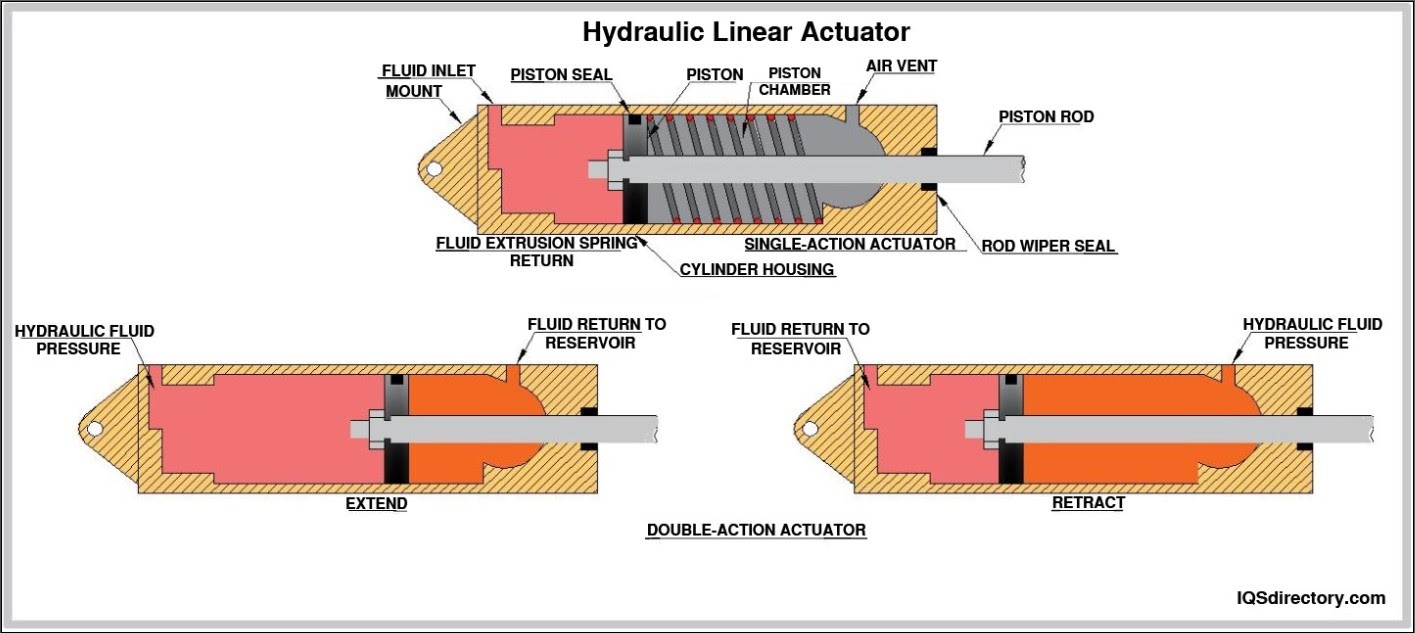
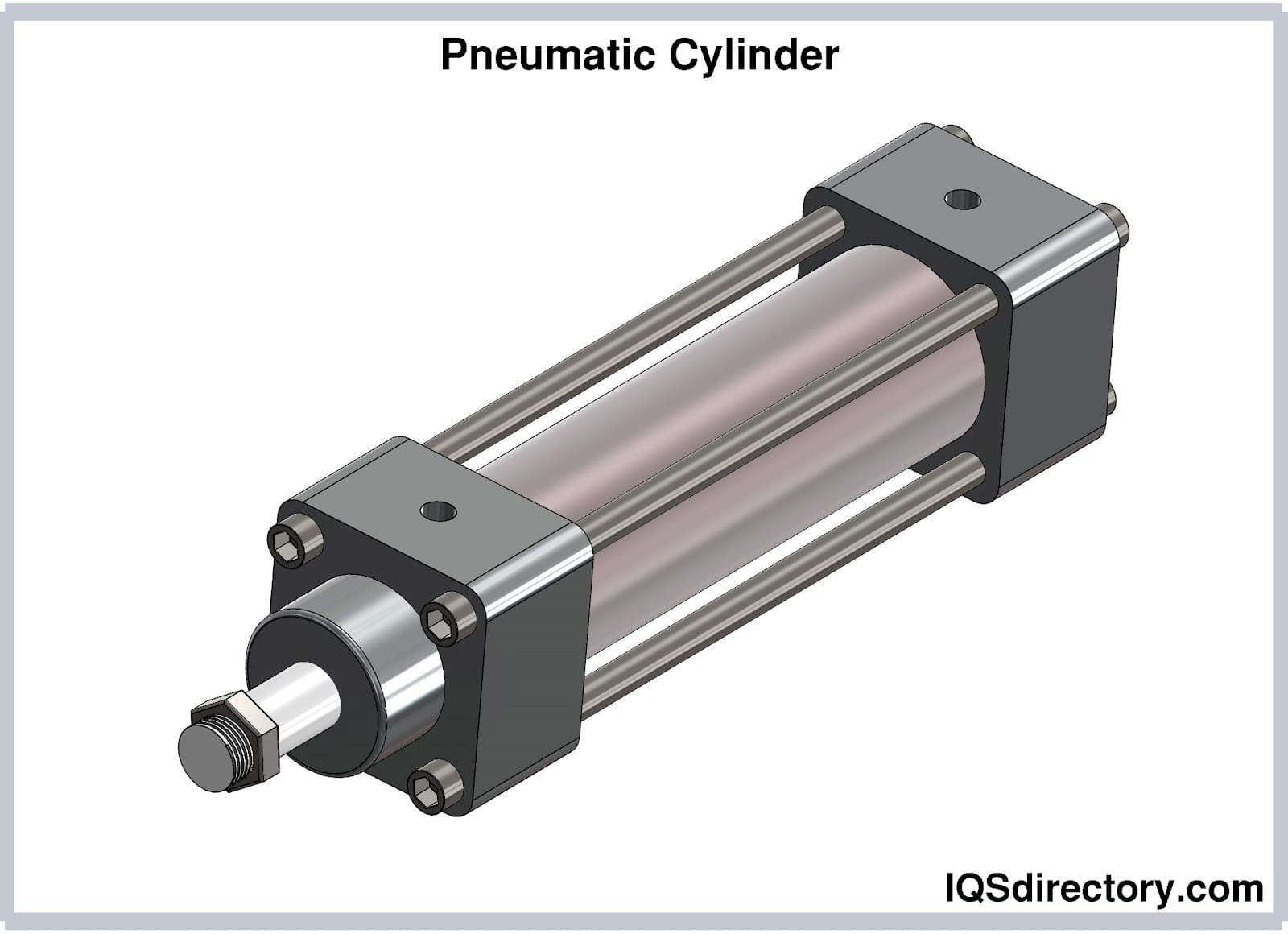
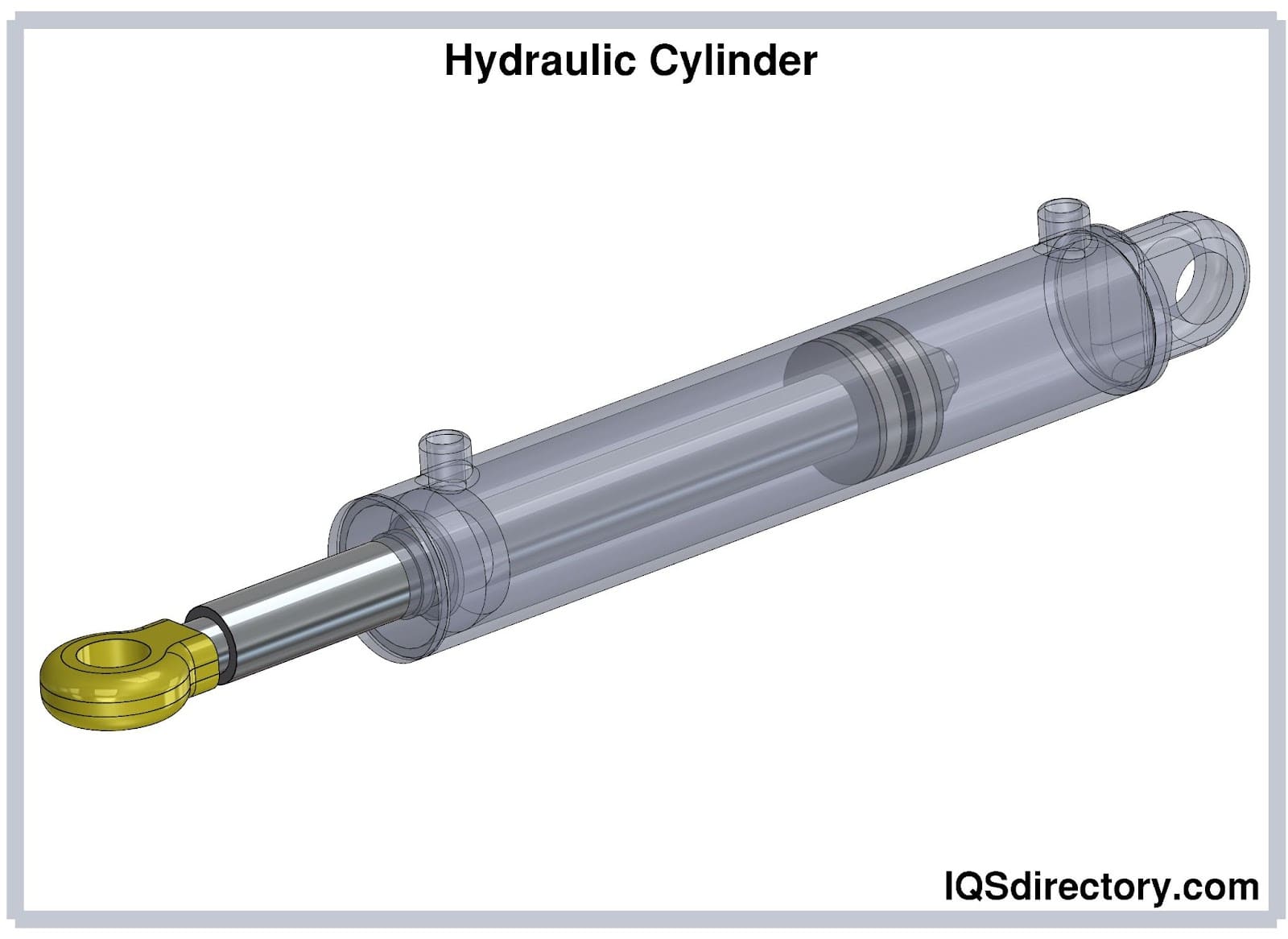
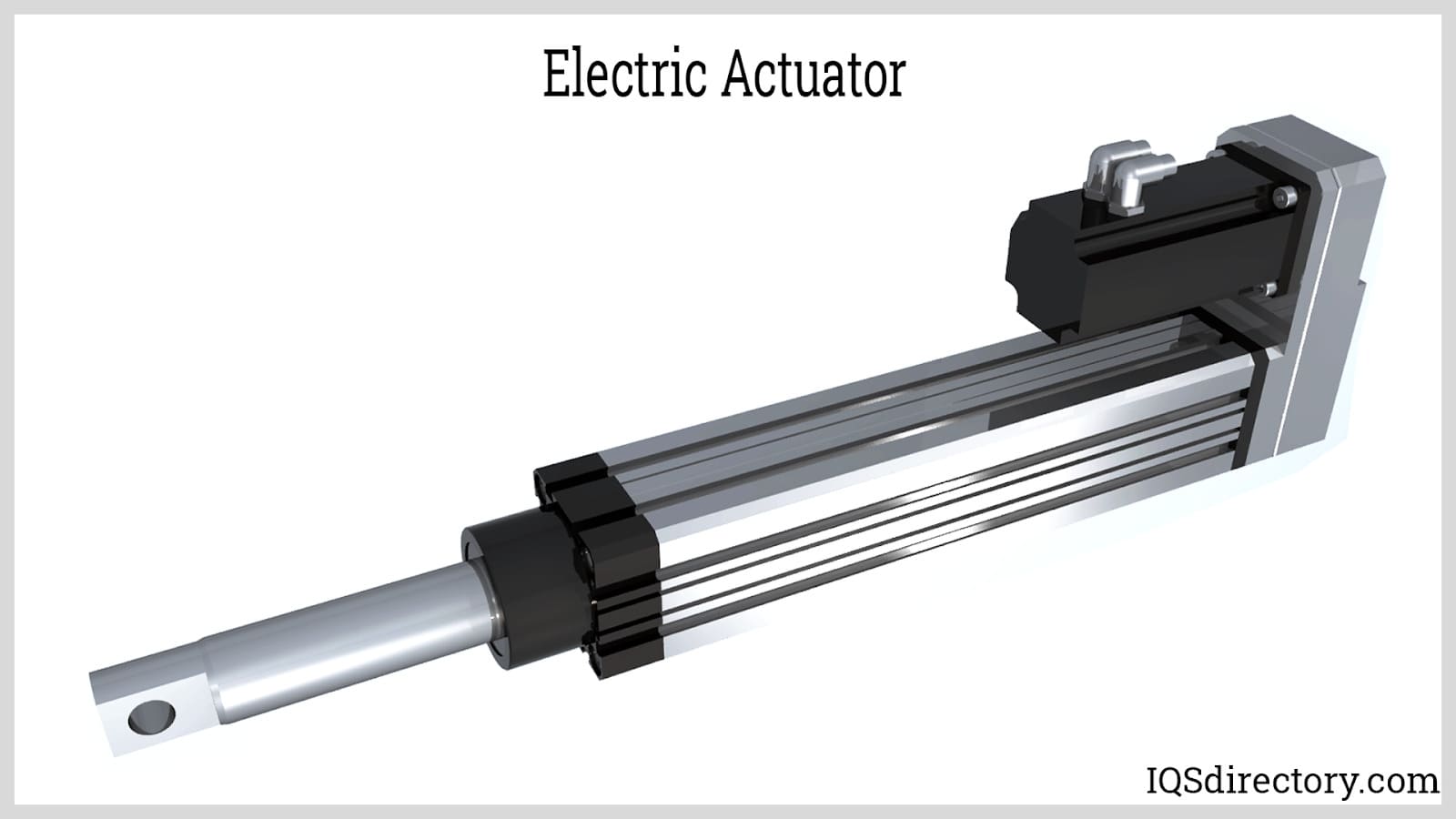
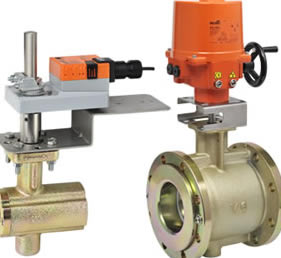 Ball Valves
Ball Valves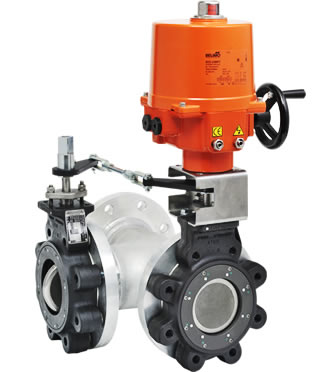 Butterfly Valves
Butterfly Valves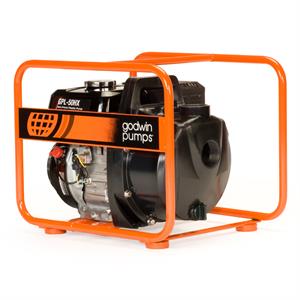 Centrifugal Pumps
Centrifugal Pumps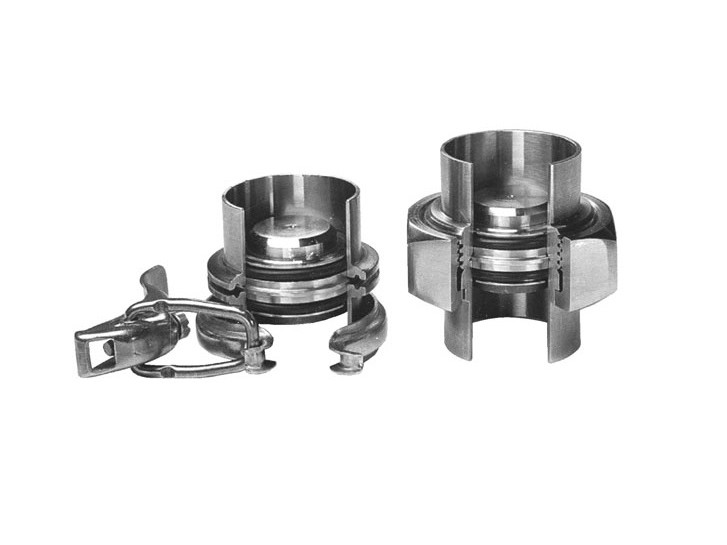 Check Valves
Check Valves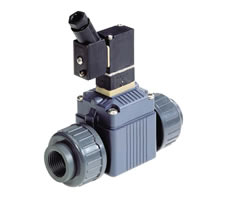 Diaphragm Valves
Diaphragm Valves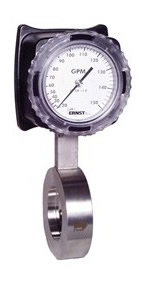 Flow Meters
Flow Meters Hydraulic Pumps
Hydraulic Pumps Hydraulic Valves
Hydraulic Valves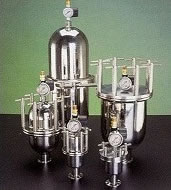 Metering Pumps
Metering Pumps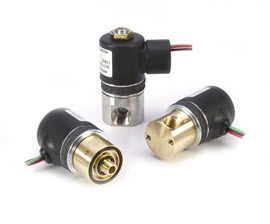 Solenoid Valves
Solenoid Valves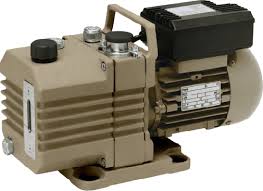 Vacuum Pumps
Vacuum Pumps Castings & Forgings
Castings & Forgings Bulk Material Handling
Bulk Material Handling Electrical & Electronic Components
Electrical & Electronic Components Flow Instrumentation
Flow Instrumentation Hardware
Hardware Material Handling Equipment
Material Handling Equipment Metal Cutting Services
Metal Cutting Services Metal Forming Services
Metal Forming Services Metal Suppliers
Metal Suppliers Motion Control Products
Motion Control Products Plant & Facility Equipment
Plant & Facility Equipment Plant & Facility Supplies
Plant & Facility Supplies Plastic Molding Processes
Plastic Molding Processes Pumps & Valves
Pumps & Valves Recycling Equipment
Recycling Equipment Rubber Products & Services
Rubber Products & Services